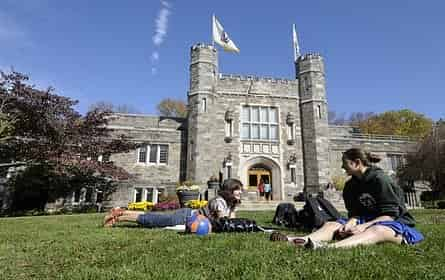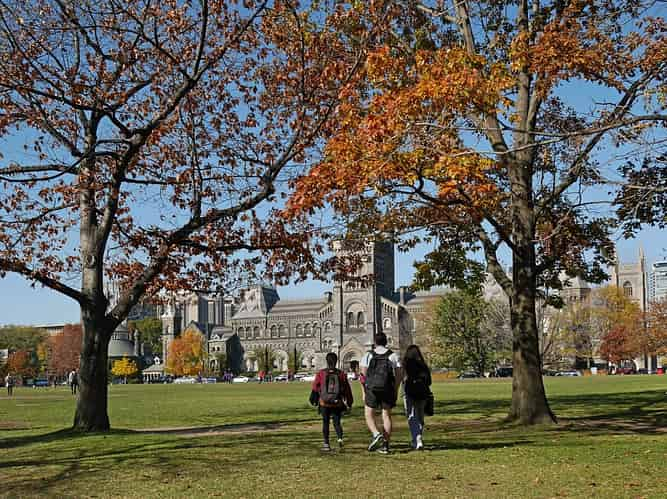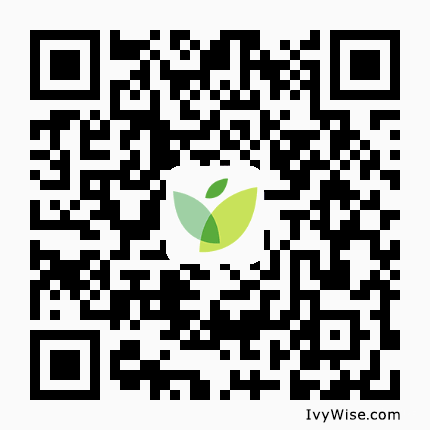Tag: College Prep

IvyWise Live: College Admissions 101 Series: Decision Rounds and Application Strategies
Events College Admissions 101 Series: Decision Rounds and Application Strategies DATE AND TIME On Demand Free Watch Now ABOUT THIS EVENT With many colleges offering a variety of application rounds, including Early Action, Early Decision, and Regular Decision, it can be difficult for students to develop the right application strategy for them. In this talk, IvyWise college admissions counselors shed light on why colleges offer different application rounds so students can understand how they can use a smart strategy to best optimize success in the college application process. Attendees will learn the differences between the various application rounds, how to identify the best round to apply during for each college on their list, and what steps to take if deferred during an early application round.

IvyWise Live: Class of 2025 College Application Primer With Former Admissions Directors
Events Class of 2025 College Application Primer With Former Admissions Directors DATE AND TIME Wednesday, May 15 7pm ET Free Register ABOUT THIS EVENT After three years of hard work, it is almost time for the Class of 2025 to apply to college! But what comes next? Join IvyWise college admissions counselors for a deep dive into the college application process and how you can set yourself up for success as you look ahead to the 2024-2025 college admissions cycle.

IvyWise On-Demand: It’s Not Too Late to Make the Most of Summer 2024
Events It's Not Too Late to Make the Most of Summer 2024 DATE AND TIME On Demand Free Watch Now ABOUT THIS EVENT Summer is just around the corner, but it’s not too late to plan for a productive break! From conducting an independent project to attending a summer program at a university campus, there are several ways for students to fight summer brain drain and stay on track with their college admissions goals! Join IvyWise college admissions counselors and a member of the Summer Discovery team as they explain the importance of having a productive summer and share suggestions to identify the best activities, courses, and programs for your interests and goals.

IvyWise On-Demand: Building Your Profile with a College Admissions Counselor
Events Building Your Profile with a College Admissions Counselor DATE AND TIME On Demand Free Watch Now ABOUT THIS EVENT Building an authentic and compelling profile throughout high school is key to college admissions success. Activities, interests, and academic pursuits all come together to tell the story of who a student is in their college application, bringing them to life to the admissions committee. But each student's interests and goals are as unique as they are, so how can they build a strong profile if they're unsure about where to start?

IvyWise On-Demand: A Look Inside Liberal Arts Colleges with a Former Admissions Director
Events A Look Inside Liberal Arts Colleges with a Former Admissions Director DATE AND TIME On Demand Free Watch Now ABOUT THIS EVENT Join IvyWise college admissions counselor Eric for a deep dive into liberal arts colleges. With over 3,000 four-year institutions in the U.S.

IvyWise On-Demand: Class of 2028 College Application Primer With Former Admissions Directors
Events Class of 2028 College Application Primer With Former Admissions Directors DATE AND TIME On Demand Free Watch Now ABOUT THIS EVENT As the Class of 2028 finishes up eighth grade and looks ahead to beginning high school, now is the perfect time to start thinking about how to make the most of their next few years. Join IvyWise college admissions counselors for a deep dive into the college application process and how you can set yourself up for success in high school. Attendees learn about selecting the right courses, developing their personal profile, and identifying the best-fit extracurricular activities and summer plans.

IvyWise On-Demand: Class of 2027 College Application Primer With Former Admissions Directors
Events Class of 2027 College Application Primer With Former Admissions Directors DATE AND TIME On Demand Free Watch Now ABOUT THIS EVENT As the Class of 2027 finishes up their first year of high school, now is a great time to regroup on the past few months and plan ahead for the rest of high school. Join IvyWise college admissions counselors for a deep dive into the college application process and how you can set yourself up for success over the next few years of high school. Attendees learn about selecting the right courses, developing their personal profile, and identifying the best-fit extracurricular activities and summer plans.

IvyWise On-Demand: Class of 2026 College Application Primer With Former Admissions Directors
Events Class of 2026 College Application Primer With Former Admissions Directors DATE AND TIME On Demand Free Watch Now ABOUT THIS EVENT The Class of 2026 is almost halfway done with high school, but there is still plenty of time to take advantage of the flexibility and opportunity that next few years can offer. Join IvyWise college admissions counselors for a deep dive into the college application process and how you can set yourself up for success over the next few years of high school. Attendees learn about selecting the right courses, developing their personal profile, identifying the best-fit extracurricular activities and summer plans, and beginning the college search process.

IvyWise On-Demand: A Look Inside Political Science and Pre-Law Colleges with Former Admissions Directors
Events A Look Inside Political Science and Pre-Law Colleges with Former Admissions Directors DATE AND TIME On Demand Free Watch Now ABOUT THIS EVENT Join IvyWise college admissions counselors Christine and Robin for a deep dive into colleges where you can study political science and pre-law. With over 3,000 four-year institutions in the U.S.

How to Choose an Independent Counselor
The college admissions process has long been a rite of passage but has arguably become more stressful in recent years as admission rates at selective institutions continue to drop. Plus, more students are continuing on to college, and each student, on average, is applying to more colleges than ever before. There are thousands of wonderful colleges and universities for students to consider, but many applicants are drawn toward a smaller number of schools considered “top schools” based on various rankings, adding to the already competitive nature of college admissions.

Developing “Pointy” Students: Taking a Cue From Fictional Icons
As the college admissions landscape has evolved, these are the more common questions I am getting from students and their families. Yes, grades and test scores remain pivotal, but that’s just the first hurdle. What makes the difference between being admitted, deferred, or denied is a student distinguishing themselves uniquely — what we call being "pointy.

Building Your Applicant Profile vs. Telling Your Story
The college application process is stacked with buzzwords, including the often-used “holistic review” and “hook.” Right now, more and more families are trying to decipher terms like “profile building,” “applicant profile,” and “telling your story.” What do these terms mean, and how do they differ?

How College Tours Help You to Find Your ‘Fit’
Spring heralds the arrival of the campus visit season when colleges welcome students to take a tour and attend an information session. After limiting in-person visits due to the pandemic, many colleges are once again offering tours regularly. At IvyWise, we encourage students to attend virtual and on-campus tours when possible because the benefits of college tours — whether in-person or via a computer — are plentiful!

Tips for Practicing Essay Writing Over Spring Break
Tips for Practicing Essay Writing Over Spring Break For many students, essay writing is one of the most intimidating parts of the college application process. While the Common Application essay is open-ended and leaves a lot of room for interpretation, some supplemental college essays are extremely specific. Whatever the prompt, students must rise to the occasion and submit the strongest applications possible.

4 College App Tips for International Students
There are many good reasons to attend university in the U.S. One of the major features that tends to draw international students is the relative flexibility of the U.

The Benefits of Signing Up for Advanced Classes
By Robin, IvyWise College Admissions Counselor Enter any conversation about college admissions, and you will inevitably hear the word “transcript.” This all-important document presents an academic narrative of the applicant, showcasing the grades and courses the student has taken throughout their high school career. When college admissions officers read a student’s application, they not only review what grades the student has earned but also the rigor of the student’s course selection.

Are Test-Optional Policies Here to Stay?
By Carolyn, IvyWise College Admissions Counselor As you might have heard, many colleges across the country have been adopting a test-optional application review process in the wake of the COVID-19 pandemic. If you know you will be submitting applications of your own sometime in the next few years, you might be wondering what exactly 'test-optional' means and whether or not these policies will apply to you. In this article, I will address some of these questions and consider the possible scenarios that you might encounter when your senior year rolls around.

Spring Into Self-Expression: Developing Your Writing Voice Through Journaling
“Today was a good day at school. Ingrid and I played at recess.” And so began my very first journal entry.

4 Skills Middle Schoolers Need to Develop Now for College Prep
We say this all the time: the earlier you start on college prep the better. But how early is early? The reality is that colleges look at everything from 9th grade on – meaning students need to show up to day one of high school ready to go.

Back to School Advice from an Expert Tutor
This back-to-school season, I think it's important for students to take a step back and get inspired by a few pieces of advice that have helped many students in the past and remain valuable for everyone, no matter where they are in their educational journey. Students need to focus on the things that matter most to them and give themselves permission to work as hard as they can at those things. But these do not need to be the same conclusions that each person draws.

Without Test Scores, How do Colleges Make Decisions?
The process of preparing for, taking, and responding to standardized test scores is a stressful and overwhelming one for students and families, and with the onset of the COVID-19 pandemic, this process has only become more stressful in recent years. One of the ways that colleges have responded to the pandemic's obstacles is to implement test-optional admissions policies to avoid disadvantaging students who have been unable to sit for an ACT or SAT. This was a sudden and drastic shift that left many students and families with questions about how it will impact their own applications.


